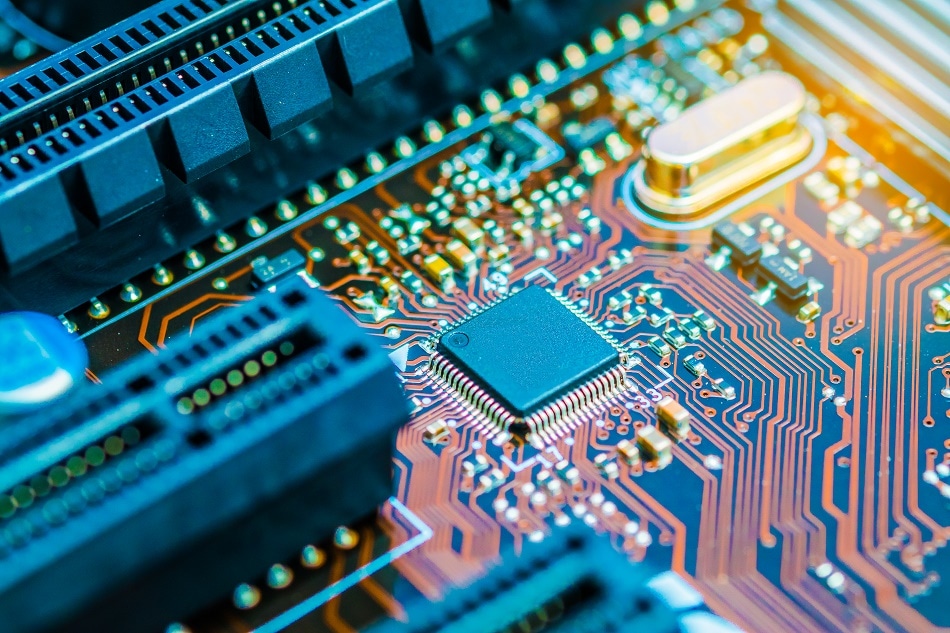The wiring of PCB board is very precise, and many PCB manufacturers use dry film process to transfer circuit graphics.
1. The dry film has holes when masking
1) Reduce the film temperature and pressure;
2) Improve hole wall roughness and tip;
3) Improve the energy of exposure;
4) Reduce the developing pressure;
5) The time after the film is applied shall not be too long, so as not to cause the diffusion and thinning of the semi fluid film at the corners;
6) When applying the film, the dry film we use should not be too tight.

2. Penetration occurs during dry film electroplating
The appearance of infiltration indicates that the dry film and copper foil are not firmly adhered, thus the electroplating solution enters. Plating is caused by the following bad reasons:
1) The film temperature is too high or too low
If the temperature is too low, the corrosion resistant film cannot be sufficiently softened and flowed, resulting in poor adhesion between the dry film and the surface of copper clad laminate. If the temperature is too high, the solvent in the corrosion inhibitor will volatilize rapidly to produce bubbles, and the dry film will become brittle, which will cause warping and peeling during electroplating shock, resulting in infiltration.
2) High or low film pressure
If the pressure is too low, the film surface will be uneven or there will be a gap between the dry film and the copper plate, which can not meet the binding force requirements. If the pressure is too high, the solvent of the corrosion resistant layer will volatilize too much, causing the dry film to become brittle. After the electroplating electric shock, it will rise and peel.
3) High or low exposure energy
In case of insufficient exposure, due to incomplete polymerization, the adhesive film swells and becomes soft during the development process, resulting in unclear lines or even film falling off. If the exposure is excessive, it will cause development difficulties, and will also cause warping and peeling in the electroplating process, forming infiltration.
3. Board surface blistering is one of the more common quality defects in PCB production process. Because of the complexity of PCB production process, it is difficult to prevent board surface blistering defects. Then, what are the causes of blistering on the PCB surface?
1) The problem of substrate processing. For some thinner substrates, because the rigidity of the substrate is poor, it is not appropriate to use a brush to brush the plate. Therefore, attention should be paid to control during production and processing to avoid poor adhesion between copper foil and chemical copper, which may cause blistering on the plate surface.
2) Oil stains caused by the machining (drilling, laminating, milling, etc.) of PCB surface, or other liquids contaminated with dust, will cause the board surface to bubble.
3) The copper brush plate is poor. The excessive pressure of the grinding plate before copper deposition will cause the deformation of the orifice, which will cause blistering in the process of copper deposition, electroplating, tin spraying, welding, etc.
4) Water washing problem. Because a lot of chemical solution treatment is required for copper plating, and there are many kinds of acid, alkali, inorganic, organic and other pharmaceutical solvents, which will not only cause cross contamination, but also cause poor local treatment of the board surface, causing some problems in the binding force.
5) Micro etching in pretreatment of copper deposition and pattern electroplating. Excessive micro etching will cause the base material leakage at the orifice, resulting in blistering around the orifice.
6) The activity of copper precipitation solution is too strong. The newly opened cylinder or the high content of three components in the bath of copper plating solution will result in the decline of physical properties and poor adhesion of the coating.
7) The oxidation of the board surface in the production process will also cause the board surface to bubble.
8) The copper was reworked poorly. In the process of reworking, blistering may occur on the surface of some reworked plates due to poor plating, incorrect reworking methods or improper control of micro etching time during reworking.
9) In graphic transfer, insufficient water washing after development, too long storage time after development or too much dust in the workshop will cause potential quality problems;
10) Before copper plating, the pickling tank should be replaced in time, otherwise it will not only cause the problem of board cleanliness, but also cause defects such as rough board surface.
11) Organic pollution, especially oil contamination, in the electroplating tank will cause blistering on the plate surface.
12) Special attention shall be paid to the charged PCB board entering the tank during the production process, especially the plating tank with air agitation.